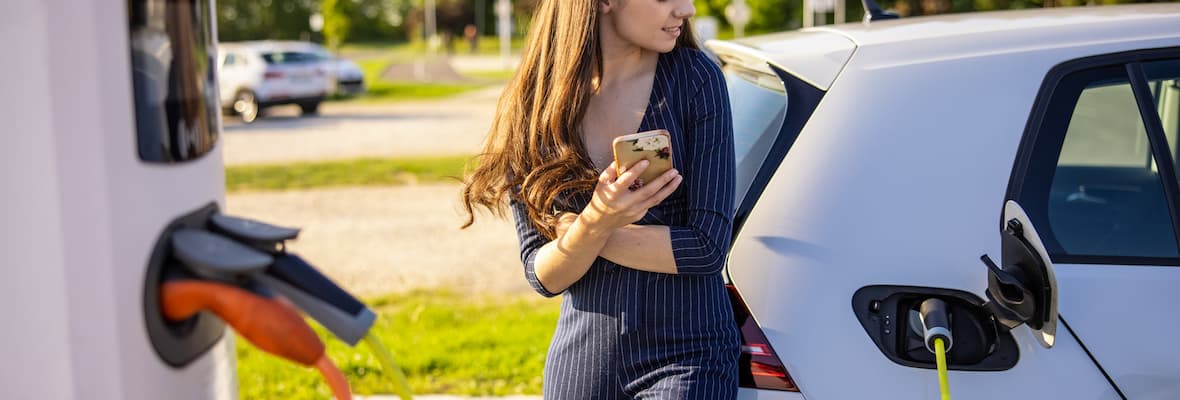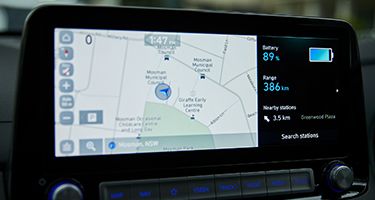Electric cars are quickly becoming the future of Australian transport.
The number of electric cars on Australian roads increased by 86% during 2021, according to the Electric Vehicle Council, which only proves the rapid growth of interest. [1]
The same can be said for all zero and low-emission alternatives in the motor market including hybrid, plug-in hybrid and battery-electric vehicles with more than 12,000 sold in February 2023 alone. [2]
With more people moving from the internal combustion engine to the electric motor, here are just a few of the options on offer in the Australian market including some of the best electric cars to get your hands on.
Tesla Model 3
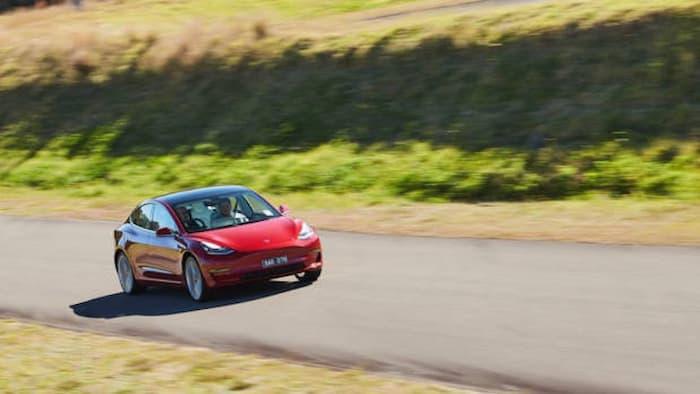
Tesla continues to hold the crown of the reigning electric car brand in Australia with more than 10,800 Tesla Model 3 vehicles and more than 8,700 Tesla Model Y cars purchased in 2022. [1]
Even though the Tesla Model 3 is the dealer's cheapest option coming in at the manufacturer's suggested retail price of over $60,000 without on-road costs, it still has decent electric motor power as well as an impressive driving range.
There’s much to say about the rapid acceleration and the plush interior that Tesla is known for. But with the Long Range and Performance models weighing in at 1874 kg, you can start to feel the weight on the corners.
Regardless, the Model 3 still stays at the top of the game, and much of it has to do with the exclusive Tesla dedicated EV platform for charging across Australia. [3]
Learn more about the 2023 Tesla Model 3 from our friends at Chasing Cars.
BYD Atto 3
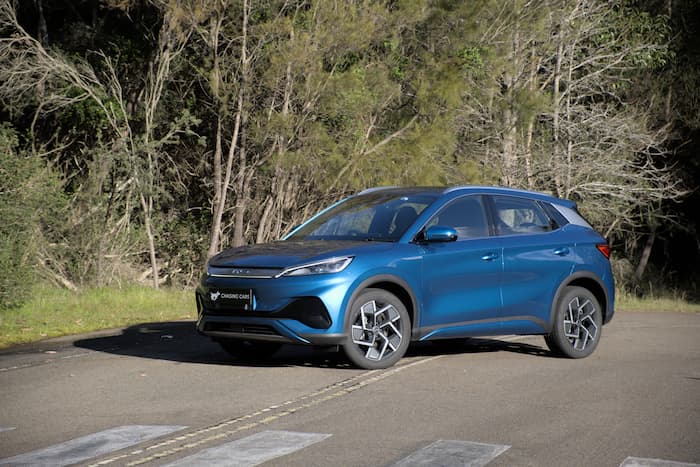
Coming in under $50,000, the BYD Atto 3 is one of the cheaper electric car options that still packs some punch. [4]
It was the first car from the China-based dealer to land in Australia in July 2022 and the small SUV has since been a hit in the market thanks to a long list of features and decent range for a smaller price point.
In 2022, the BYD Atto 3 was ranked as the third most purchased electric car model in Australia, behind the Tesla Model 3 and Tesla Model Y. [1]
Learn more about the 2023 BYD Atto 3 from our friends at Chasing Cars.
Polestar 2
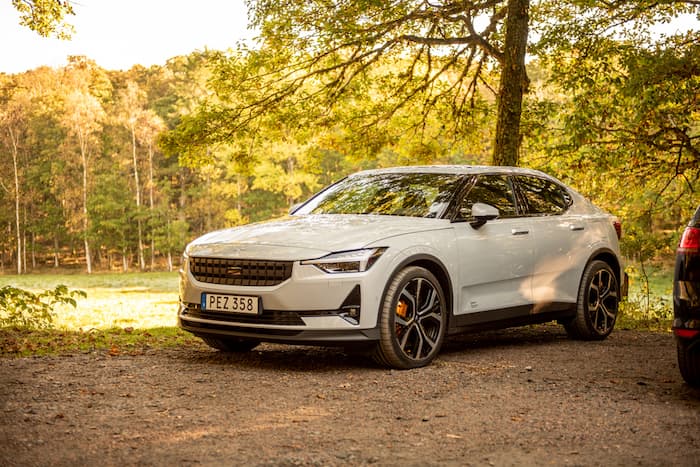
The Polestar 2 comes from Volvo’s electric vehicle offshoot and has become a crowd favourite in Australia.
The Swedish brand has created a competitively priced electric car for just over $70,000 before on-road costs that boasts impressive motor power and a stylish interior and exterior.
But range performance can vary depending on single or dual motors, with the single motor generally performing better on the highway, while the dual motor performs better around town.
Read a full review of the Polestar 2 from our friends at Chasing Cars.
MG ZS EV
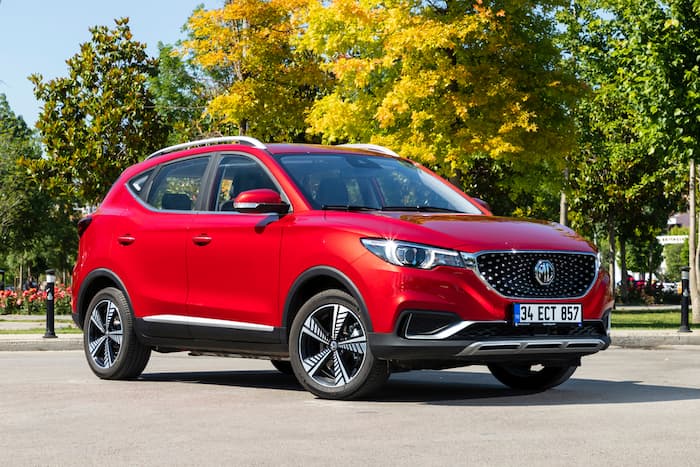
Although it’s a newer name in the Australian market, MG’s fully electric option is quickly making waves, particularly thanks to its enticing price point.
It’s the cheapest option on the market currently at just over $40,000 before on-road costs and offers an easier way for people to enter the expensive electric vehicle market.
However, with the lower price point comes a plain interior as well as average suspension that might not be suited for some bumpy Australian roads.
But as a cheaper way to start your journey into the world of green vehicles, it offers a comfortable ride. [6]
Read a full review of the 2021 MG ZS EV from our friends at Chasing Cars.
Hyundai Kona Electric
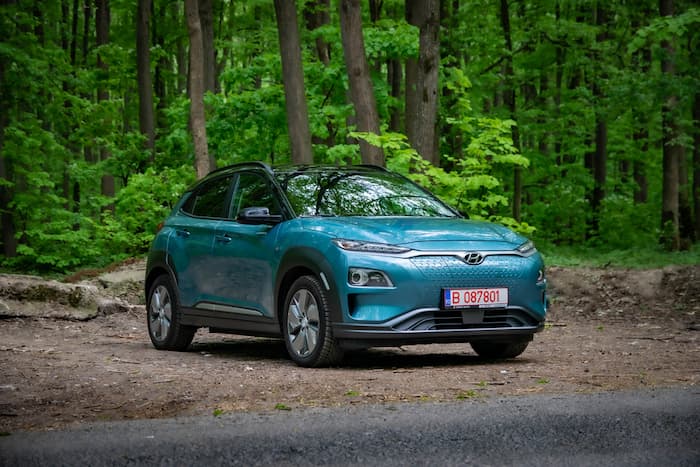
The Hyundai Kona Electric was one of the first electric cars to be established in Australia before Tesla took over.
With a relatively affordable price tag in the world of electric vehicles at just under $60,000 before on-road costs, this car is another option for everyday families.
There’s a decent amount of range provided in the Kona Electric which ends up being one of the most important deciding factors for people buying into the electric market.
But even though it’s a cheaper option, $60,000 is still expensive. And for that price point, the Kona Electric is missing some key features on the base model including LED lighting all around, auto high beam lights and front parking sensors. [7]
Learn more about the 2021 Hyundai Kona Electric from our friends at Chasing Cars.
Volvo C40 Pure Electric
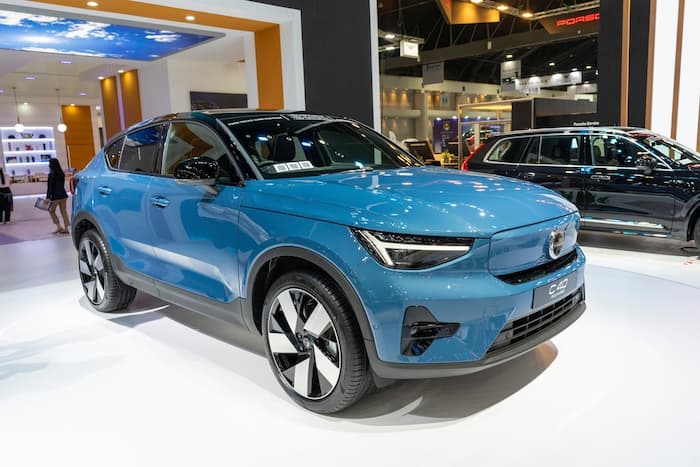
Volvo has set itself a mission to become a fully electric car company by 2030 which means it should be at the top of the game when it comes to its existing fleet.
As one of the more expensive vehicles at more than $80,000 driveaway, the Volvo C40 comes equipped with distinctive styling and a comfortable drive.
It also meets the expected luxury feel thanks to its streamlined cabin and comfortable interior which helps to put it in competition with similar dealers such as Mercedes-Benz.
But the SUV does have a high energy consumption with an average maximum range of around 430 km. [8]
Read a full review of the 2023 Volvo C40 Pure Electric from our friends at Chasing Cars.
Nissan Leaf
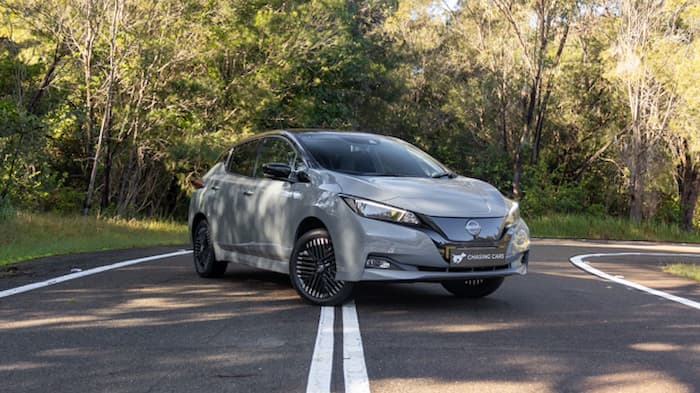
The Nissan Leaf has built a loyal customer base in Australia for its reliability and inexpensive upfront and ongoing costs amid other small hatchbacks.
As a classic mid-range car, the Nissan Leaf is ideal for getting around town with its useful 270 km range.
But being middle of the line also comes with some average interior materials as well as a basic rear seat and a tight boot considering the price. [9]
Learn more about the 2022 Nissan Leaf from our friends at Chasing Cars.
Hyundai IONIQ 5
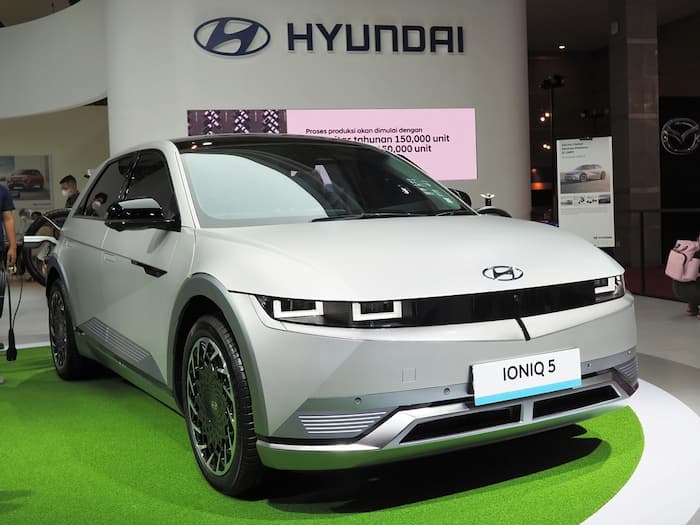
The Hyundai Ioniq 5 comes with some impressive features and styling considering the $75,900 price tag.
The car offers up ultra-fast charging that can potentially take the Ioniq 5 just 17 minutes and 16 seconds to get from 10% to 80%.
But it can be let down by its more expensive ownership costs including higher running expenses and lower resale value as well as the fact that there’s a fairly short supply in Australia at the moment. [10]
Read a full review of the 2022 Hyundai Ioniq 5 from our friends at Chasing Cars.
Mercedes-Benz EQA
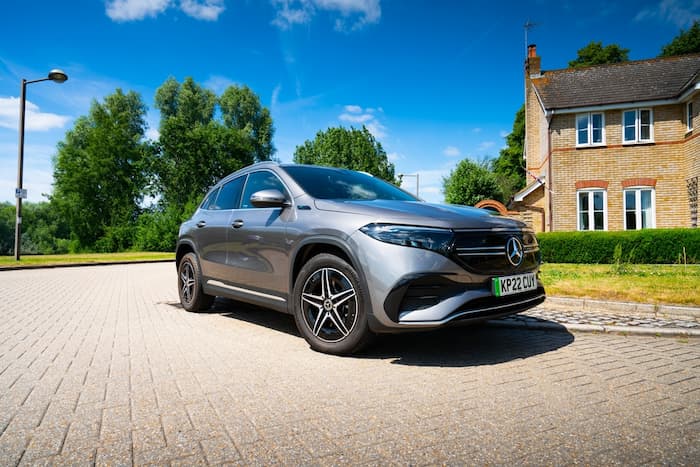
As the most expensive car on the list, Mercedes-Benz's small SUV has set a good standard for luxury electric car options.
It offers up a very real-world range that can allow you to get a decent drive from a fully charged battery. And despite the heaviness of the car, the Mercedes-Benz EQA still handles itself well on the road.
However, the downside is the 100 kW max charging speed isn’t groundbreaking, and regular servicing costs can be costly. [11]
Read a full review of the 2021 Mercedes-Benz EQA 250 from our friends at Chasing Cars.
Considerations When Buying an Electric Car
While there’s no shortage of benefits to buying an electric car, there’s plenty to consider before you get behind the steering wheel of a battery-electric vehicle.
Can you afford the upfront cost of the car?
Ongoing costs of owning an electric car can be cheaper in the long run with savings on fuel and less spent on services due to electric motors requiring less upkeep than an internal combustion engine.
But with the cheapest electric cars coming in at just under $50,000, midrange sitting around $70,000 and more luxury cars such as Mercedes Benz or Tesla hitting over $90,000, hefty upfront costs can be daunting.
Lack of supply is the main reason for higher prices for both new and used electric cars, so as more models hit the market it’s expected prices will eventually drop.
For now, there are some government incentives in place to help save pennies where possible.
State and Territory Electric Car Incentives
Depending on where you live, discounts and exemptions could be applied to your electric car purchase. These include:
- NSW - Stamp duty exemption for eligible electric cars up to $78,000 (including GST) and a $3,000 rebate for the first 25,000 vehicles up to $68,750 (including GST).
- ACT - Uncapped stamp duty exemption for eligible electric vehicles, two years free registration and interest-free loans up to $15,000 for homeowners to buy zero-emission vehicles and/or charging infrastructure. [13]
- Vic - $3,000 subsidy for the first 20,000 new electric vehicles purchased up to $68,740 (including GST). [14]
- SA - $3,000 subsidy for the first 7,000 new electric cars up to $68,750 (including GST) and three years of free registration for eligible vehicles. [15]
- Qld - $3,000 rebate for eligible vehicles up to $58,000 (including GST). [16]
- NT - $1,500 discount on stamp duty for new and used electric vehicles up to $50,000 and free registration until 2027. [17]
- Tas - Uncapped stamp duty exemption for eligible vehicles. [18]
- WA - $3,500 rebate up to $70,000 (including GST). [19]
Federal Incentives
On a federal level, fuel-efficient cars that cost less than $84,916 (including GST but excluding any state or territory discounts) are exempt from the luxury car tax (LCT).
This is compared to the lower threshold applied to other vehicles of $71,849.
This incentive is set to save more electric car owners from paying 33% LCT on the total value of their cars. [20]
What’s the car’s range and will it suit your driving habits?
In a country as spread out as Australia, range performance can be one of the most important factors as to whether or not buyers will choose electric vehicles.
The Electric Vehicle Council says the average range for an electric car is around 480 km but advancing technology is already seeing new models exceed this average, including the Tesla Model S which has a range of 628 km.
With average Australian buyers travelling 38 km a day, this means an electric vehicle owner could go 10 days on average without recharging.
Range is tested using the World harmonised Light vehicle Testing Procedure (WTLP) cycle which uses real-world driving data to measure energy consumption and emissions.
However, it doesn’t consider aerodynamics and different weather conditions.
When buying a car make sure to track your travel to compare to the WTLP of specific models.
If your weekly travel is well over the range, it might be worth looking into plug-in hybrid electric vehicles (PHEV) which combine a petrol engine and a rechargeable battery to provide a longer range while still releasing lower emissions.
How much does it cost to insure an electric car?
Most insurers offer car insurance for electric vehicles, but premiums can be more expensive than for petrol or diesel cars.
Like other vehicles, policy costs vary depending on aspects such as the model of your car, your location and how you use it.
But according to the Insurance Council of Australia (ICA), premiums generally spike due to electric vehicles being more expensive to produce and replace.
Repairs can take longer and cost more for insurance companies as there are often long wait times for parts to be imported and for high-demand specialist tradespeople to be available. [21]
Different insurance companies can also charge varying rates, but the ICA said it was possible to get an annual policy for an electric vehicle in Brisbane for around $1,500. [22]
When deciding on the right insurance premium, you can save a few extra pennies by setting a driver-age restriction, getting a low kilometres policy, buying online, paying annually and increasing your excess.
What are your charging options and how much do they cost?
Australia is rapidly transforming the way electric cars are integrated into society with public charging stations available as well as options to charge your car at home.
The time it takes to charge your car will depend solely on the specific model’s battery size, battery temperature, battery state-of-charge and AC/DC output.
Battery life can also be optimised by only charging to 80% most times, as charging to 100% every time can put stress on the overall battery pack. [23]
Charge at Home
Charging your car at home is likely the easiest option, but depending on your setup it could take longer to reach full capacity.
All electric vehicles can be charged with a standard 240V wall socket which adds around 12 km of range per hour meaning it could potentially reach 180 km of range after charging from 5 pm to 8 am.
For faster charging rates, you could have a dedicated 7kW charging unit installed to provide 30 to 60 km per hour.
You can install more powerful AC charging units at home, but they’re limited by the car’s onboard charger so make sure you check battery compatibility and capacity beforehand. [24]
Regardless of whether you’re interested in upgrading or not, it’s generally best to get an electrician who specialises in electric vehicles into your home to make sure your switchboard, wiring and metering are up to safety standards.
Charge in Public
The electric vehicle charging network in Australia is still relatively patchy with much more work needed to make it reliable for driving long distances in less populated areas.
But in metropolitan cities, there are plenty of DC fast charging options available that may be more convenient for some time-poor people.
The rate of charging at most stations is usually upwards of 50kW, which can give up to 200 km of range in half an hour. [24]
However, it’s all determined by the level of electric power your vehicle is producing and what it’s compatible with.
Some models will provide adapter cables to fit varying plugs, except for Tesla stations which are exclusive to their customers.
How much does it cost to charge an electric car?
Prices vary between models, battery size and choice of charging but in this current climate, the cost is less likely to fluctuate compared to petrol and diesel prices.
The cheapest charging option is to plug the car in overnight during the off-peak tariff hours from 10 pm to 7 am where it could be as cheap as $0.16 per kWh.
To reach 80% charge overnight at home, it could cost under $10 while a fast charge at a public 350 kW DC charger could cost drivers between $20 and $30 to reach 80%.
For less powerful DC power around 50kW, it might cost around $13 to $20. [25]
For the ultimate price savings, those with solar panels can potentially charge for free when the sun is out.
